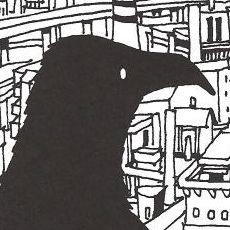Tag: violence
-
Devilishly delicious horror: Devilman manga review
Read More →: Devilishly delicious horror: Devilman manga reviewMy damned savoir and his demented smile lurked forth from the shadows. His name was none other than Go Nagai and his bloody offering was Devilman. And it was perfect. Perfectly and utterly disturbing.
-
Basking in the inferno of Cloverfield, remembering Blue Gender
/
/ ReviewsRead More →: Basking in the inferno of Cloverfield, remembering Blue GenderHead-spinning, stomach-turning and mind-racing are a few of the adjectives I’d choose to describe how I felt when I stumbled out of the cinema last night, having just suffered through Cloverfield. To say I’d been looking forward to this film would be an understatement, and even though I’d only discovered its baffling trailer in early…
-
Immortals and non-Immortals both Enjoy Life Equally, so says Baccano!
/
/ ReviewsRead More →: Immortals and non-Immortals both Enjoy Life Equally, so says Baccano!It bothers me to say I took a while to realize the quality of "Baccano!". Aside from boasting no less than 18 main characters, the Pulp Fiction-esque narrative would constantly fracture and leap back and forth in time. I didn’t like that I had to make an effort to constantly focus and be forced to…
-
Sex, violence and samurai; introducing Shigurui
/
/ ReviewsRead More →: Sex, violence and samurai; introducing ShiguruiPlease note this post is heavy on images of an “adult nature”; though I understand many of you might be unsettled by such blunt depictions of sex and violence, the truth of Shigurui lies not in words alone, but its unrelenting presentation of old Japan’s institutional depravity. Basically, you’ve been warned.
-
Hokuto no Ken: The Legend of Raoh – Demonic fist of the devil
/
/ ReviewsRead More →: Hokuto no Ken: The Legend of Raoh – Demonic fist of the devilAlong with Ninja Scroll, I grew up watching the Fist of the North Star movie. I was attracted by the unapologetic gore but this was no mere action flick – set in a post apocalyptic world ravaged by nuclear holocaust, I felt in awe of the endlessly barren landscapes, the grandiose struggle for power between…
-
Berserk – 3 – The Hawk that soars ever higher
/
/ ReviewsRead More →: Berserk – 3 – The Hawk that soars ever higherThe moustache twiddling decadence caused by extended aristocracy is an issue central to the narrative of Berserk. Regardless of social standing, we all like to dream that we are destined for greatness, to achieve something worthwhile. Aristocracy exists to elongate wealth and protect respect no matter what the cost, and that often includes suppressing the…
-
Berserk – 2 – Sparks fly as the wheels of fate spin
/
/ ReviewsRead More →: Berserk – 2 – Sparks fly as the wheels of fate spinEpisode two introduces us to the important characters that make up the “Band Of The Hawk” – in other words, the personalities that dominate the rest of Berserk. The dark-skinned Casca is an exceptionally talented swordsman who just so happens to be a woman. That she commands so much respect amongst her comrades suggests that…
-
Berserk – 1 – An introduction to obsession
/
/ ReviewsRead More →: Berserk – 1 – An introduction to obsessionI’m just going to come right out and say it — Berserk is my favourite anime of all time. I became an anime fan because of Naruto, but Berserk and its alluring quantities of bloody violence, epic action and tragic friendship immediately captured my heart and held onto it ever since. I still remember having…
-
Reflecting on Kemonozume – Too cool for otaku
/
/ ReviewsRead More →: Reflecting on Kemonozume – Too cool for otakuIt’s fair to say that the creative staff “working on” (more like playing with) Kemonozume must have had so much fun, from flying heads and sexed up monkeys to a perverted old man shoving a pair of severed female arms down his skanky speedos – this is a show that clearly had no pretension of…
-
Kemonozume – 10 – Sex-starved monkeys and eating fish with giant detectives
/
/ ReviewsRead More →: Kemonozume – 10 – Sex-starved monkeys and eating fish with giant detectivesSince we’re now hitting the final couple of episodes, Kemonozume is building up to an action packed climax. The villain, or “big boss”, has turned out to be the fat Ohba – I liken his bizarre appearance to that of a clown, and deep down, we’re all scared of clowns – their smiley made-up faces…
